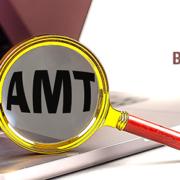Among its numerous tax provisions, the One Big Beautiful Bill Act (OBBBA) reinstated immediate deductions for research and experimental (R&E) expenditures under Internal Revenue Code Section 174, beginning in 2025. The IRS has recently issued transitional guidance (Revenue Procedure 2025-28) on how this change will be implemented.
The guidance addresses several critical issues. Here’s what businesses of all sizes need to know.
The reinstatement
R&E expenditures generally refer to research and development costs in the experimental or laboratory sense. They include costs related to activities intended to discover information that would eliminate uncertainty about the development or improvement of a product.
Since 2022, the Tax Cuts and Jobs Act (TCJA) has required businesses to amortize domestic R&E costs over five years, with foreign costs amortized over 15 years. The OBBBA permanently reinstates the pre-TCJA treatment of domestic R&E costs, allowing their deduction for expenses incurred or paid in tax years beginning after 2024.
The OBBBA also permits small businesses that satisfy a gross receipts test to claim the R&E deduction retroactively to 2022. (For 2025, average annual gross receipts for the previous three years must be $31 million or less.) And any business that incurred domestic R&E expenses in 2022 through 2024 may elect to accelerate the remaining deductions for those expenditures over either a one- or two-year period.
The immediate deduction of qualified R&E expenses isn’t mandatory. Depending on a variety of factors, in some situations, claiming it may not be advisable. Taxpayers generally can instead elect to capitalize and amortize such expenses paid in a tax year after 2024 over at least 60 months. The election must be made by the due date, with extensions, of the original tax return for the first tax year to which the election applies. For 2025, a taxpayer that makes an accounting method change to capitalize and amortize R&E expenses will be deemed to have made the election.
Retroactive deductions for small businesses
As noted, eligible small businesses can elect to treat the changes to Sec. 174 as if they took effect for tax years beginning after 2021, rather than after 2024. How to do this depends in part on whether the taxpayer has already filed a 2024 tax return.
If the taxpayer filed a 2024 return before August 28, 2025, an automatic extension to supersede that return to include the new guidance is available. However, the taxpayer must file that replacement return by the extended deadline (typically September 15 or October 15). Alternatively, the taxpayer can file an amended 2024 return, following one of the two options discussed below.
If the taxpayer didn’t file a 2024 return by August 28, the taxpayer can file by the applicable extended deadline and either:
- Elect to expense eligible R&E expenses under the new guidance, which would also require filing amended returns for 2022 and 2023, or
- Do an automatic method of accounting change and a “true-up” adjustment on the 2024 return for the 2022 and 2023 R&E expenses.
Elections must be made by the earlier of July 6, 2026, or the applicable deadline for filing a claim for a credit or refund for the tax year (generally, three years from filing the return).
Accelerated deductions for all businesses
Businesses with unamortized domestic R&E expenses under the TCJA can elect to fully recover those remaining expenses on their 2025 income tax returns or over their 2025 and 2026 returns.
Notably, the IRS guidance states that taxpayers “may elect to amortize any remaining unamortized amount” of such expenses. This language suggests that the deduction will be considered an amortization expense. This is significant in light of changes the OBBBA made to the business interest expense deduction.
The business interest deduction generally is limited to 30% of the taxpayer’s adjusted taxable income (ATI). (Taxpayers that meet the same annual gross receipts test discussed earlier are exempt from the limitation.) Under the OBBBA, beginning in 2025, ATI for purposes of the interest deduction is calculated without deductions for depreciation, amortization or depletion. So amortization deductions are “added back,” potentially increasing the ATI and the allowable business interest deduction. If R&E expenses aren’t treated as an amortization deduction, they could reduce the allowable business interest deduction.
The interplay with the research credit
The Sec. 41 research tax credit is also available for certain research-related expenses, and you can’t claim both the credit and the deduction for the same expense. A tax deduction reduces the amount of income that’s taxed, while a tax credit reduces the actual tax you owe dollar-for-dollar, providing much more tax savings than a deduction of an equal amount. But the types of expenses that qualify for the credit are narrower than those that qualify for the deduction.
The OBBBA changes a TCJA provision so that the amount deducted or charged to a capital account for research expenses is reduced by the full amount of the research credit, as opposed to being subject to a more complex calculation that had been in effect under the TCJA. The amount that’s capitalized is reduced by the amount of the credit claimed. For example, suppose the allowed credit is $20,000. The capitalized amount for the year would be reduced by $20,000.
The OBBBA continues, however, to allow taxpayers to elect to take a reduced research credit, rather than reducing their R&E deduction. The OBBBA also allows certain small businesses (generally determined by the gross receipts test mentioned above) to make late elections to reduce their research credit — or to revoke prior elections to reduce the credit. The late elections generally are available for tax years for which the original return was filed before September 15, 2025, and must be made by the earlier of July 6, 2026, or the deadline for filing a claim for a credit or refund for the tax year, on an amended return or an administrative adjustment request (AAR).
Reduced uncertainty
The IRS guidance also provides automatic IRS consent to applications to change accounting methods for domestic R&E expenses under the TCJA, the OBBBA, the small business retroactive method and the recovery of unamortized method — reducing uncertainty. We can help address any questions you have about the tax treatment of R&E expenses.
© 2025












